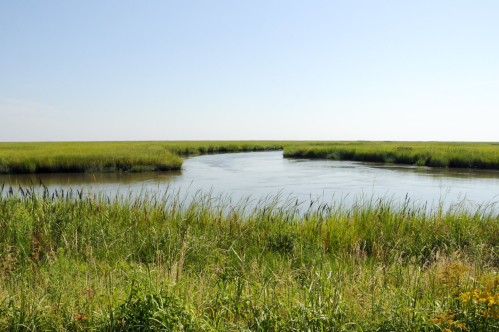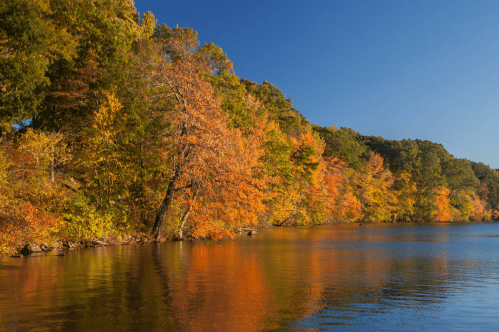Wyoming's history is wild and untamed — that's part of what we all love about living here. Unfortunately, sometimes our landscape and our lifestyles catch up, and these tragic Wyoming disasters tell the saddest stories of the Cowboy State.
1. The Crash of United Airlines Flight 409
United Airlines Flight 409 was flying from New York City to San Francisco, with several layovers along the way, on October 6, 1955. The plane crashed into Medicine Bow Peak, near Laramie, Wyoming, killing all 66 people on board. The crash was the deadliest commercial airline crash in American history at the time. While the exact cause of the flight disaster was not determined, possible causes include a faulty altimeter, low clouds obscuring the mountain, or a strong downdraft. Despite United Airlines' attempt to destroy the wreckage, some debris is still scattered around the peak.
2. The Gros Ventre Landslide
This enormous landslide left very visible scars on Wyoming's landscape. The massive landslide occurred on June 23, 1925, after a period of snowmelt, heavy rain, and earthquake tremors. The rockslide traveled down Sheep Mountain and rode 300 feet up across a mountain on the opposite side of the Gros Ventre. It even formed a dam across the Gross Ventre River — where Lower Slide Lake is today.
On May 18, 1927, the landslide dam failed, and the massive flood that resulted wiped out the town of Kelly, killing six people. The Gros Ventre Landslide and Flood is a tragic example of the mighty power of mother nature.
3. The Crash at Bomber Mountain
On 28 June 1943, a B-17F-55-DL Flying Fortress left Pendleton, Oregon to join a bomber group headed to Europe during World War II. Around midnight, the captain radioed that their position was near Powder River, Wyoming, but they were never heard from again. Multiple search campaigns tried, in vain, to find the missing plane among the mountains. It took more than two more years before two cowboys spotted the shiny aluminum from the wreckage and discover all ten crew members deceased. The mountain was named "Bomber Mountain" in their memory.
4. The Yellowstone Fire of 1988
The enormous Yellowstone Wildfire of 1988 was the largest wildfire in the recorded history of the park. Multiple small fires spread out of control thanks to wind and dry conditions, and the large fire burned for months. Two major destinations in the park, including the Old Faithful Complex, were nearly destroyed. On September 8, 1988, the park closed to the public for the first time in its history. Despite thousands of firefighters and military personnel working to contain the flames, the park did not find relief until the cool, wet autumn weather intervened. 36% of Yellowstone National Park was affected by the wildfires, totaling nearly 800,000 acres. Miraculously, there were only two fire-related deaths near the park.
5. The Hanna Mine Disaster
The first Hanna Mine Disaster occurred in Mine #1 on June 30, 1903. Methane gas violently exploded and the mine caved in, killing 169 miners. 46 survivors barely made it out alive. There were few investigations into the incident, and the mine re-opened a few months later. Five years later, on March 28, 1908, Hanna Mine #1 exploded again, trapping 18 miners inside. The rescue team, consisting of an inspector and 40 first responders entered the mine to assist. A second explosion occurred, and all 59 people were killed instantly. While some bodies were recovered and buried in the nearby Hanna Cemetery, there are still 201 men buried in the mountain today.
After 1908, the Union Pacific Coal Company permanently closed Mine #1, but the company opened new mines in the town. All of the mines finally closed in 1954, and there's little left to remember the miners who died inside this now-grassy hill.
6. The Teton-Yellowstone Tornado
The Teton–Yellowstone tornado was a strange natural phenomenon — normally, tornadoes do not occur this high in the mountains! It was the strongest tornado ever recorded in Wyoming, and our only F4. The storm raged on July 21, 1987, and the twister cut through a 24-mile long, 1.5-mile wide path in the Teton Wilderness and Yellowstone National Park. This tornado even crossed Continental Divide! It was the highest altitude violent tornado in our country's history. No people were killed in the storm, but more than 1 million trees were uprooted and tossed around like matchsticks... only to burn a few years later in the 1988 Yellowstone Fire.
7. The Blackwater Fire
The Blackwater Fire was not the largest fire in Wyoming's history, but it was one of the deadliest. It raged from August 21 to 24, 1937, burning 1,700 acres. A swift change of winds in Shoshone National Forest led to the death of 15 firefighters and left 38 firefighters injured. Those who suffered had been trapped by wild spot fires that surrounded them. Sadly, the Blackwater Fire killed more professional wild firefighters than any other fire between the Great Fire of 1910 and the Yarnell Hill Fire in 2013.
8. The Glenrock Train Wreck
If You Only Have One Day to Visit This Small Town in Maine, Here’s Everything You Absolutely Can’t Miss

If You Only Have One Day to Visit This Small Town in Massachusetts, Here’s Everything You Absolutely Can’t Miss

If You Only Have One Day to Visit This Small Town in Maryland, Here’s Everything You Absolutely Can’t Miss

The barren landscape between Glenrock and Casper, Wyoming, was the site of our state's worst train disaster. On the evening of September 23, 1923, a train on the Chicago, Burlington and Quincy Railroad was just 15 miles into its journey to Denver when it plunged into Cole Creek. The bridge spanning the creek had been washed away in a historic week of storms. It took reporters from Denver nearly a week to reach the site due to other downed bridges and flooding over central Wyoming. On the train itself, 30 souls perished.
Do you remember watching the footage of the Yellowstone Fire? I think those images will stay with me for the rest of my life.
For a bit of a happier read about our lovely state, take the time to learn about 12 Cozy Mountain Towns In Wyoming That Will Make You Want To Move There.
Subscribe to our newsletter
Get the latest updates and news
Thank you for subscribing!
















